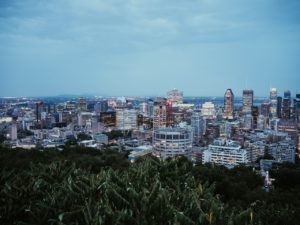Cebu is recognized for its wide variety of heritage sites. Being among the first few Spanish settlements and known as the ‘Queen City of the South’, the city now serves as one a primary trading port for prominent industries in the region.
For many tourists, the perfect blend of industrial vibes as well as the urban city life is what makes Cebu special. Majority of people seeking a well balanced mixture of heritage, culture and modern technology come down here every year.
If you are planning to come down, you will surely love to explore some of the following historical landmarks.
If you are into historical relics, definitely check out a statue of Child Jesus from 1521 in the Basilica del Santo Niño houses.
Magellan’s Cross sends you back in time when the renowned explorer Ferdinand Magellan planted a cross in to Cebu’s soil to mark converting the locals to Christianity.
The Casa Gorordo lets you have a glimpse of how life was like Cebu during the early Spanish era. Fort San Pedro still remains to be one of the smallest Spanish outposts in the Philippines.
Even if you are not much of a fan of history, Cebu still has a lot to offer. You can head down to Head to Tops, which is a well known observation deck and offers breathtaking views of the city.
At the same time, there are plenty of malls like SM Seaside and Ayala Center.
While taking up all these activities, you are bound to get hungry. Don’t forget to head down to CNT Lechon and Zubuchon for the best roast pig in town.
If you are looking forward to something sophisticated, you will enjoy Shangri-La Mactan’s Tides and Marco Polo Plaza Cebu’s Cafe Marco. Exceptional Japanese cuisine is also available at Nonki and Italian is available at Café Orchidia.
Cebu—the Queen City of the South, an economic hub steeped in heritage and adventure—is your gateway to a unique fusion of urban scenes and resort experiences. From the moment you land at its doorstep, you will be greeted by the flowing, hull-like wooden arches of the new Mactan International Airport Terminal—a distinctive architectural statement highlighting local woodworking tradition and a glimpse to the confluence of the rustic and modern sights you will discover scattered all throughout the metro and the 167 islands surrounding it.
Why?
Once you step out of the airconditioned confines of the airport, the first thing you will encounter is the city’s sprightly tropical heat riding on, yet also, subdued by the gentle flow of the northeast zephyr. The experience may leave you scurrying to the cozy refuge of the nearest hotel—and Cebu is home to multinational franchises and backpackers’ guesthouses alike—or it may be the balmy invitation you’ve been waiting for to sample the sun-soaked shores of Mactan. If it’s the latter, hail one the friendly cab drivers neatly queued along the terminal’s exit and cruise through the burgeoning urban scenery as you head for one the many boutique resorts less than an hour away.
Where to Stay
Cebu—the Queen City of the South, an economic hub steeped in heritage and adventure—is your gateway to a unique fusion of urban scenes and resort experiences. From the moment you land at its doorstep, you will be greeted by the flowing, hull-like wooden arches of the new Mactan International Airport Terminal—a distinctive architectural statement highlighting local woodworking tradition and a glimpse to the confluence of the rustic and modern sights you will discover scattered all throughout the metro and the 167 islands surrounding it.
Where to Go
Should the walled gardens of the city fail to pique your thrill-seeking spirit, it’s time to venture into Cebu’s provincial hideaways. Ask your cab driver to take you to the Cebu South Bus Terminal, and once you get there, take a bus with a sign saying “Bato via Barili.” The trip will ferry you through the bustling sprawl of Metro Cebu—with the occasional roadside peddler hitching a ride to sell you chicharron (friend pork rind), guilty nibbles you should try at least once; then along the winding paths hugging the shoreline; until you finally reach the sleepy town of Badian.
If you haven’t booked one online already, ask the locals in town to recommend you a tour through one of the most exhilarating experiences in your life—the 4-hour Kawasan canyoneering adventure. You’ll start off by signing a rather ominous release waiver, protecting the tour from any liability should any accident arise because you failed to heed safety guidelines. Tightly strap on your safety gear and walk to the banks of Kanlaob River. Your journey officially starts when you jump right into it. The trek will be mostly in the azure waters, carving a path through rock and jungle. You’ll navigate sharp rocks and crevices, maintain your footing down and up slippery slopes, jump from (if you dare) twenty- to sixty-foot high drops, and relaxingly ride along the cool caerulean current while river-worn canyon walls loom over you. Your adventure culminates in Kawasan Falls where you can relax on bamboo rafts or get your tired shoulders a vigorous massage under the cascading water.
Things to do
Since you’re already enjoying yourself in the South, why not proceed to yet another sleepy town and experience firsthand what has recently disrupted its otherwise quiet obscurity. Hop on the bus bound for Oslob and you will find a quaint picturesque town, with a surprisingly majestic Baroque church— made of hewn coral stone—as a centerpiece dominating its tranquil waterfront. But that’s not the reason why people are flocking here. Head to the nearby beach resorts and locals will take you swimming along the world’s largest fishes—Whale Sharks. These gentle filter-feeding giants, ply the warm temperate waters nearby in search of plankton, and so long as you respectfully observe the rules so as not to stress them, you’ll get a chance to interact with majestic.
Northern Cebu
Once you’ve had your fill of sun and sea, cliff and canyon, it’s time to head back to the city and explore its heritage. In the center of Cebu, stands one of its most venerable landmarks—the Basilica del Santo Niño. Take a taxi downtown and you will get a glimpse of the city’s weathered yet vibrant soul as you stand before the Baroque-Colonial edifice of coral and concrete, with its neo-classical façade segmented by shallow pilasters and adorned by ornate bas reliefs, one of which depicts—just below the church’s triangular pediment—the Child Jesus triumphant over evil, perhaps a symbol of the Cebuanos’ belief in innocence overcoming the cruelties of cynicism of the world. Walk pass the intricately carved wooden doors, and the Romanesque interior will make you feel like you’ve stepped back in time. The hall—with its ceiling covered by meticulously painted murals and punctuated by a polychrome retablo—is not only a declaration of piety but an expression of the city’s artistic spirit.
The icon of the Santo Niño is not only a historical and religious emblem of Cebu, but a cultural and festive inspiration as well. Every third week of January, tourists and devotees flock to the city as it celebrates the Sinulog—an annual expression of piety and a flamboyant parade of costumes and energy. If you happen to visit the city in its festive peak, bring along your celebratory vigor as you will wade through devotees and tourists to get a glimpse of the tireless dancing during the day and a ton of revelry from dusk till dawn.
Cebu’s Finest Food
After you’ve seen what the city’s sights, you may have built up an appetite and all ready to sample Cebu’s delightful delicacies. Have a taste of the mouth-watering, crispy lechon, a scrumptious roasted pig hailed by celebrity chef as the “the best pig ever” on his hit TV show No Reservations. If you want to have a taste of it straight out of sizzling heat, Carcar is the best place to visit. However, if you’re short on time, Zubuchon and CNT are just as popular.
Other traditional and no less yummy Filipino dishes are best enjoyed at Café Laguna, the Golden Cowrie Native Restaurant and Abuhan.
A surplus of sun and sea, a dash of adventure, a convergence of culture, cuisine, and art, and perhaps a bit of debauchery—Cebu is your all-in-one tropical urban paradise.







